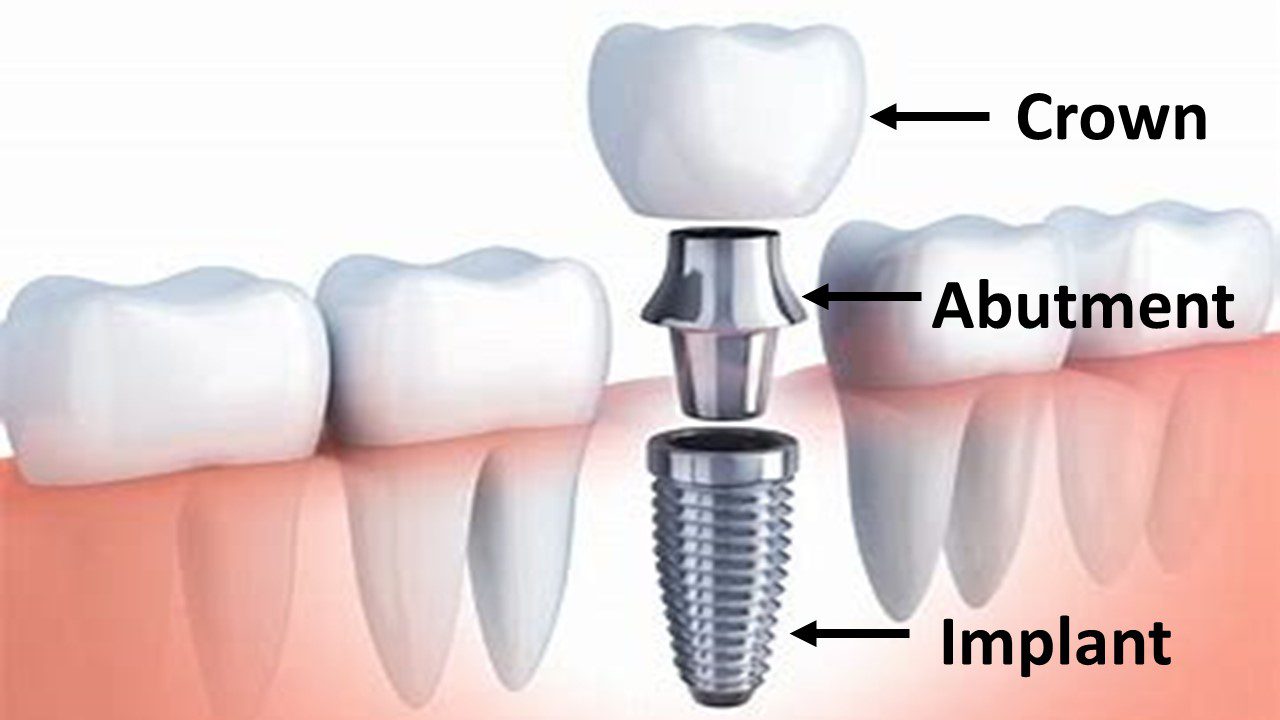What It Is
At its core, a dental implant is an artificial tooth root made from biocompatible materials such as titanium. This implant is surgically placed into the jawbone beneath the gum line, effectively replacing the missing tooth root. Once integrated into the jawbone through a process called osseointegration, the dental implant provides a strong foundation for a replacement tooth – usually a crown – to be attached.
The Procedure
The process of getting a dental implant typically involves several stages:
Initial Assessment: During the initial consultation, we will evaluate your oral health, take X-rays, and discuss the feasibility of the procedure. Factors like bone density, overall health, and oral hygiene are taken into consideration.
Implant Placement: In this step, the dental implant is surgically positioned into the jawbone. This procedure is performed under local anesthesia, (and with IV sedation, if you chose) and the implant is left to heal and fuse with the bone over a period of a few months.
Abutment Placement: Once osseointegration is complete, an abutment (a connector) is attached to the implant. The abutment acts as a support link between the implant and the replacement tooth.
 Crown/Bridge Attachment: The final step involves placing a custom-made crown onto the abutment (or a bridge onto multiple implants/abutments, in cases of multiple or all missing teeth, see below). The crown/bridge is designed to match the surrounding teeth in shape, size, and color, ensuring a natural and seamless appearance.
Crown/Bridge Attachment: The final step involves placing a custom-made crown onto the abutment (or a bridge onto multiple implants/abutments, in cases of multiple or all missing teeth, see below). The crown/bridge is designed to match the surrounding teeth in shape, size, and color, ensuring a natural and seamless appearance.
When few implants are possible due to factors like limited placement options, finances, or health, snap-in dentures are a better option than traditional ones for those with no teeth.

 Crown/Bridge Attachment: The final step involves placing a custom-made crown onto the abutment (or a bridge onto multiple implants/abutments, in cases of multiple or all missing teeth, see below). The crown/bridge is designed to match the surrounding teeth in shape, size, and color, ensuring a natural and seamless appearance.
Crown/Bridge Attachment: The final step involves placing a custom-made crown onto the abutment (or a bridge onto multiple implants/abutments, in cases of multiple or all missing teeth, see below). The crown/bridge is designed to match the surrounding teeth in shape, size, and color, ensuring a natural and seamless appearance.
